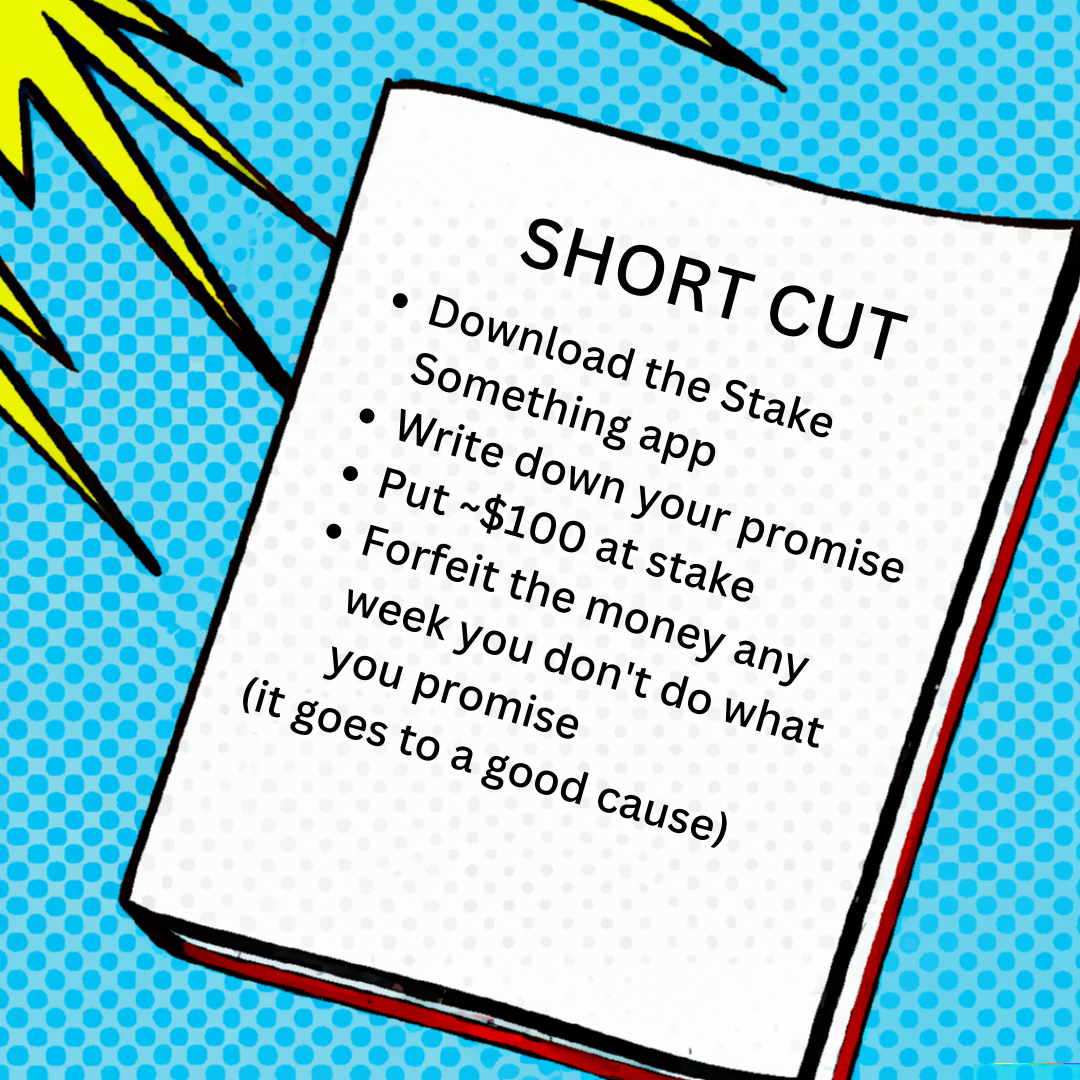Instant motivation
Instructions
Behaviour science says risking money is the best way to stick to a promise. The Stake Something app helps you manage that.
What do you want to do each week? It must be measurable; e.g.
- I want to go jogging four times a week
- I want to stop drinking wine
- I want to cut down to two desserts a week
It’s a weekly cycle and you’ve gotta be able to decide every week whether or not you did what you said.
You only commit to one week at a time and you stop whenever you like.
Motivation is fleeting
When you have the thought ‘I should actually do this’, stop reading and act on the thought. Hit the download button, install the app and write in it what you’re promising to do.
If you don’t act straight away, the motivation will pass and the opportunity will be lost.
Not convinced? Keep reading.
But if you agree with the 5 principles summarised below from the Research Library, it’s time to hit a download button and put something at stake.
1. Money influences behaviour
You know this, because you buy most things on special, drive to places that have cheap things and dress up nicely for expensive restaurants. The supporting studies are referenced on pages 2, 3 and 4 of the Research Library.
2. We're loss averse
Humans are very sensitive to losing things – compared to striving for things. Research shows risk is twice as powerful as reward. See studies on pages 5, 6 and 7 of the library. Now, you put these first two points together and there’s a formula for behaviour change: risk losing money to influence your behaviour.
3. Your brain has a built-in bias
… in favour of NOW. Any benefit in the present (lying on the couch) beats a benefit in the future (getting fit through exercise). And you’re only ever in the NOW. The evidence for what they call Present Bias is on pages 8, 9 and 10.
What we do with staking is bring a COST into the present if you fail to act.
4. Risk activates your survival circuitry
This interview with Holly illustrates the point. When you risk losing money, you activate the survival circuitry in your brain (amygdala, insula, ACC). That’s the circuitry most likely to produce action. The rest of your brain is mostly trying to maintain the status quo.
Remember that sinking feeling in your stomach when you discover something is going to cost you a bucket of money? When you stake money you’re using that instinct to get yourself exercising (or whatever). Again, none of the science here is controversial. Check pages 11 – 14.
5. Neuroplasticity turns actions into habit
You already know that things you do habitually are easy. That’s what we’re doing here; converting XYZ New Behaviour into a boring old habit. The best way to do that is to start doing the new thing – because the experience of doing rewires the brain in a way that thinking and planning cannot.
Once you’ve sparked yourself into action, (using risk) the experience of actually doing it will reduce your resistance over time. You shift from extrinsically motivated (risk/reward) to intrinsically motivated (hey, whadya know, I’m exercising). Check the neuroplasticity section in the library.
And here are your download buttons:
Knowledge is not that helpful
Doctors have higher blood pressure, cholesterol, get less sleep and do less exercise than the average person. All that professional knowledge doesn’t direct your behaviour.
Because the part of the brain that does ‘action selection’ is far more influenced by emotion than knowledge. What are the emotional levers? Risk and reward. And you know which works better.
You’ve just read an article containing all the knowledge you need to change pretty much any behaviour you want. I’m afraid that will make NO difference to your behaviour. Neuroplasticity tells us that the most powerful influence on your behaviour is not knowledge, not mindfulness, not willpower, not self-control. It’s taking the actions. So start.



